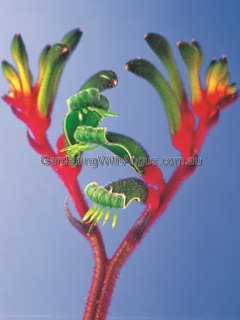Array
(
[0] => Array
(
[id] => 451
[is_published] => 1
[websiteID] => 5
[url] => /gardening/growing-kangaroo-paws.php
[page_status] => Published
[number_of_ads] => 4
[can_use_editor] => 1
[last_modified_date] => 2013-09-16 00:00:00
[last_modified_by] => Alan
[checked_for_duplicate_content] =>
[title] => Growing kangaroo paws (Anigozanthos) in your garden
[heading] => Growing kangaroo paws (Anigozanthos) in your garden
[meta_description] => Learn how to grow kangaroo paws (Anigozanthos) in your garden. Article written by native gardening expert Angus Stewart.
[article_category_1] => Gardening
[article_category_2] =>
[article_category_3] =>
[article_category_4] =>
[article_category_5] =>
[business_category_1] => Landscaper
[business_category_2] => Nursery
[business_category_3] => Garden Designer
[business_category_4] => Landscape Architect
[business_category_5] =>
[number_of_google_mrecs] => 1
[show_google_ad_bottom_of_page] => 1
[show_get_quotes_top_of_page] => 1
[show_get_quotes_rhs_of_page] => 1
[show_directory_search_widget] => 0
[show_trending_content_widget] => 1
[show_facebook_widget] => 1
[show_further_reading_section] => 1
[show_sponsors_section] => 1
[show_top_article_ad] => 1
)
[1] => Array
(
[id] => 453
[is_published] => 1
[websiteID] => 5
[url] => /gardening/growing-grevilleas.php
[page_status] => Published
[number_of_ads] => 10
[can_use_editor] => 1
[last_modified_date] => 2013-09-16 00:00:00
[last_modified_by] => Alan
[checked_for_duplicate_content] =>
[title] => Growing Grevilleas
[heading] => Growing Grevilleas
[meta_description] => Learn how to grow grevilleas in your garden.
[article_category_1] => Gardening
[article_category_2] =>
[article_category_3] =>
[article_category_4] =>
[article_category_5] =>
[business_category_1] => Landscaper
[business_category_2] => Nursery
[business_category_3] => Garden Designer
[business_category_4] => Landscape Architect
[business_category_5] =>
[number_of_google_mrecs] =>
[show_google_ad_bottom_of_page] =>
[show_get_quotes_top_of_page] =>
[show_get_quotes_rhs_of_page] =>
[show_directory_search_widget] =>
[show_trending_content_widget] =>
[show_facebook_widget] =>
[show_further_reading_section] => 1
[show_sponsors_section] => 0
[show_top_article_ad] => 1
)
[2] => Array
(
[id] => 10
[is_published] => 1
[websiteID] => 5
[url] => /landscaping/planning-garden-design.php
[page_status] => Published
[number_of_ads] => 2
[can_use_editor] => 1
[last_modified_date] => 2014-01-13 00:00:00
[last_modified_by] => Angela
[checked_for_duplicate_content] =>
[title] => Planning your garden
[heading] => Planning your garden
[meta_description] => Learn how to design a garden using a step-by-step approach.
[article_category_1] => Landscaping
[article_category_2] =>
[article_category_3] =>
[article_category_4] =>
[article_category_5] =>
[business_category_1] => Landscaper
[business_category_2] => Nursery
[business_category_3] => Garden Designer
[business_category_4] => Landscape Architect
[business_category_5] =>
[number_of_google_mrecs] => 1
[show_google_ad_bottom_of_page] => 1
[show_get_quotes_top_of_page] => 1
[show_get_quotes_rhs_of_page] => 1
[show_directory_search_widget] => 1
[show_trending_content_widget] => 1
[show_facebook_widget] => 1
[show_further_reading_section] => 1
[show_sponsors_section] => 1
[show_top_article_ad] => 1
)
[3] => Array
(
[id] => 524
[is_published] => 1
[websiteID] => 5
[url] => /gardening/how-to-plant.php
[page_status] => Published
[number_of_ads] => 3
[can_use_editor] => 1
[last_modified_date] => 2013-09-16 00:00:00
[last_modified_by] => Alan
[checked_for_duplicate_content] =>
[title] => How to plant
[heading] => How to plant
[meta_description] => Learn how to plant correctly. Planting correctly will not only get your garden off to a flying start, but it will also ensure that your plants's root systems develop as healthily as possible, maximising their long-term stability.
[article_category_1] => Gardening
[article_category_2] =>
[article_category_3] =>
[article_category_4] =>
[article_category_5] =>
[business_category_1] => Landscaper
[business_category_2] => Nursery
[business_category_3] => Garden Designer
[business_category_4] => Landscape Architect
[business_category_5] =>
[number_of_google_mrecs] =>
[show_google_ad_bottom_of_page] =>
[show_get_quotes_top_of_page] =>
[show_get_quotes_rhs_of_page] =>
[show_directory_search_widget] =>
[show_trending_content_widget] =>
[show_facebook_widget] =>
[show_further_reading_section] => 1
[show_sponsors_section] => 0
[show_top_article_ad] => 1
)
)
Helpful articles
Growing kangaroo paws (Anigozanthos) in your garden. Learn how to grow kangaroo paws (Anigozanthos) in your garden. Article written by native gardening expert Angus Stewart.
Growing Grevilleas. Learn how to grow grevilleas in your garden.
Planning your garden. Learn how to design a garden using a step-by-step approach.
How to plant. Learn how to plant correctly. Planting correctly will not only get your garden off to a flying start, but it will also ensure that your plants's root systems develop as healthily as possible, maximising their long-term stability.
Plant description
Anigozanthos 'Bush Games' is a reasonably tough red and green kangaroo paw with good colour definition. A perennial plant to about a metre and a half tall, it has strappy clumping leaves, and grows from underground rhizomes. Performs best in a sunny spot and well drained soil. Once the flowers die back, they can be cut back hard to the ground, which will tidy the plant and encourage new shoots. The flowers were used in the 2000 Olympic games.
Further reading: Growing Kangaroo Paws (an article written by native plant expert Angus Stewart).
Additional plant information
Flowers
Flower colour: red or brown
Flowering season: spring summer
Plant size
Maximum height: 1.2 metres
Minimum height: 1.2 metres
Maximum width: 0.5 metres
Minimum width: 0.5 metres
Sunlight, frost & salt tolerance
This plant will tolerate full sunlight.
Light frost tolerance.
Plant is salt tolerant.
Fauna attracting?
Yes. Attracts: birds.
Climate
This plant species will grow in the following climates: cool, temperate.
Soil types & conditions
Loam: moist, well-drained.
Clay: not suitable.
Sand: moist, well-drained.
Miscellaneous information
Native to: Australia.
Planting season: not specified.
Types of fertiliser: not specified.
Find a nursery
Search for another plant

